|
Printables |
PowerPoints |
Online exercises |

|
B1+-B2 Who says that? 25 Jobs and their description.
Students read the job titles and look for what they do / description about their given role in a job.Answers on page 2. After the exercise has been checked,it could also be used as a non-defining relative clause speaking exercise. Answers on page 2
Level: intermediate
Age: 12-100
Type:
Downloads: 108
|

|
B1+-B2 Word formation 7 types of word formation!
Students need to familiarise themselves with all of the words in bold. Then they read the sentences to see which word in bold needs to complete the gap-fill. Then they change the word into the correct form. There are 7 types of word formation:Noun to Adjective, Verb to Adjective, Noun to Verb,Verb to Noun, Adjective to Noun, Adjective to Adverb & N...
Level: intermediate
Age: 10-100
Type:
Downloads: 122
|

|
B1+-C1 Idioms and expressions relating to faults and repairs 1
First, students need to familiarise themselves with the 20 idioms and expressions and their meanings. Then they read the definitions to see which one is being described and write that word in the space provided Answers on page 2.
Level: intermediate
Age: 12-100
Type:
Downloads: 116
|
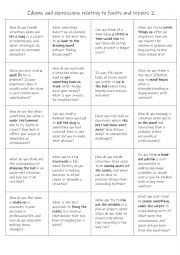
|
B1+-C1 Idioms and Expressions Relating to Faults and Repairs 2
This is a speaking reinforcement activity to supplement the other worksheet I uploaded on 31/1/2025. Students working in pairs or small groups can either ask each other the questions or answer the question themselves.
Level: intermediate
Age: 12-100
Type:
Downloads: 105
|
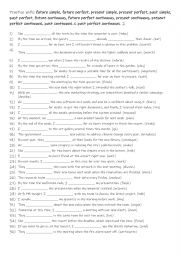
|
B1+-C1 12 Practise with: future simple, future perfect, present simple, present perfect, past simple, past perfect, future continuous, future perfect continuous, present continuous, present perfect continuous, past continuous & past perfect continuous. 2
Students should practise these tenses because they are essential for expressing actions and events in different time frames, allowing for clear and precise communication. By mastering these tenses, students can talk about future plans (future simple), describe ongoing actions (present continuous, future continuous), and show the connection between ...
Level: elementary
Age: 10-100
Type:
Downloads: 144
|
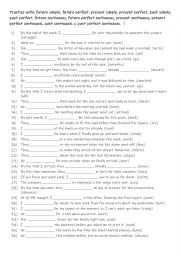
|
B1+-C1 12 Tenses 1
Students should practise these tenses because they are essential for expressing actions and events in different time frames, allowing for clear and precise communication. By mastering these tenses, students can talk about future plans (future simple), describe ongoing actions (present continuous, future continuous), and show the connection between ...
Level: intermediate
Age: 10-100
Type:
Downloads: 114
|
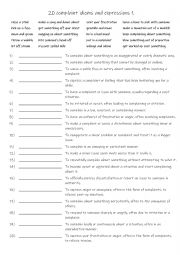
|
B1+-C1 20 complaint idioms and expressions 1
First, students need to familiarise themselves with the 20 idioms and expressions and their meanings. Then they read the definitions to see which one is being described and write that word in the space provided Answers on page 2.
Level: intermediate
Age: 12-100
Type:
Downloads: 104
|
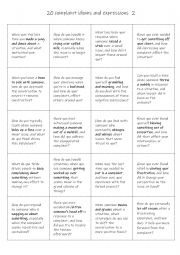
|
B1+-C1 20 complaint idioms and expressions 2
This is a speaking reinforcement activity to supplement the other worksheet I uploaded on 13/1/2025. Students working in pairs or small groups can either ask each other the questions or answer the question themselves.
Level: intermediate
Age: 12-100
Type:
Downloads: 109
|
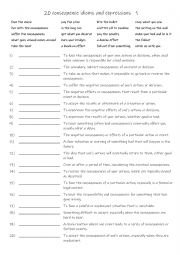
|
B1+-C1 20 consequence idioms and expressions 1
Learning idioms and expressions related to consequences, such as face the music, bite the bullet and reap what you sow, are essential because they enrich communication and help convey complex ideas succinctly. These phrases allow students to describe cause-and-effect situations, personal responsibility, or the ripple effects of decisions with cultu...
Level: intermediate
Age: 10-100
Type:
Downloads: 143
|
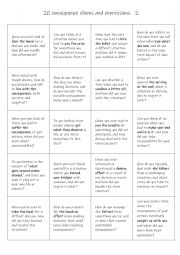
|
B1+-C1 20 consequence idioms and expressions 2
This is a speaking reinforcement activity to supplement the other worksheet I uploaded on 1 / 12 / 25. Students working in pairs or small groups can either ask each other the questions or answer the question themselves.
Level: intermediate
Age: 12-100
Type:
Downloads: 107
|
|
|
|
|












